-
 Bitcoin
Bitcoin $116400
-0.36% -
 Ethereum
Ethereum $4033
3.40% -
 XRP
XRP $3.302
-1.26% -
 Tether USDt
Tether USDt $1.000
-0.02% -
 BNB
BNB $796.1
1.67% -
 Solana
Solana $177.8
1.89% -
 USDC
USDC $0.9999
0.00% -
 Dogecoin
Dogecoin $0.2314
4.09% -
 TRON
TRON $0.3381
0.14% -
 Cardano
Cardano $0.7989
1.22% -
 Stellar
Stellar $0.4496
-1.84% -
 Chainlink
Chainlink $20.42
9.42% -
 Hyperliquid
Hyperliquid $41.17
0.88% -
 Sui
Sui $3.914
3.77% -
 Bitcoin Cash
Bitcoin Cash $584.7
1.52% -
 Hedera
Hedera $0.2632
-0.54% -
 Avalanche
Avalanche $24.09
3.40% -
 Ethena USDe
Ethena USDe $1.001
-0.02% -
 Litecoin
Litecoin $123.2
1.33% -
 Toncoin
Toncoin $3.318
-0.04% -
 UNUS SED LEO
UNUS SED LEO $8.984
-0.05% -
 Shiba Inu
Shiba Inu $0.00001323
2.85% -
 Uniswap
Uniswap $10.90
4.41% -
 Polkadot
Polkadot $3.999
3.34% -
 Dai
Dai $1.000
0.01% -
 Cronos
Cronos $0.1630
9.64% -
 Bitget Token
Bitget Token $4.484
0.82% -
 Monero
Monero $272.4
2.44% -
 Pepe
Pepe $0.00001173
6.03% -
 Aave
Aave $290.8
2.88%
What is the difference between Sol coin and Ethereum?
Solana and Ethereum, while both supporting smart contracts, differ significantly in scalability (Solana boasts higher speeds and lower fees), consensus mechanisms (PoH vs. PoS), and ecosystem maturity (Ethereum's is larger).
Mar 02, 2025 at 02:06 am
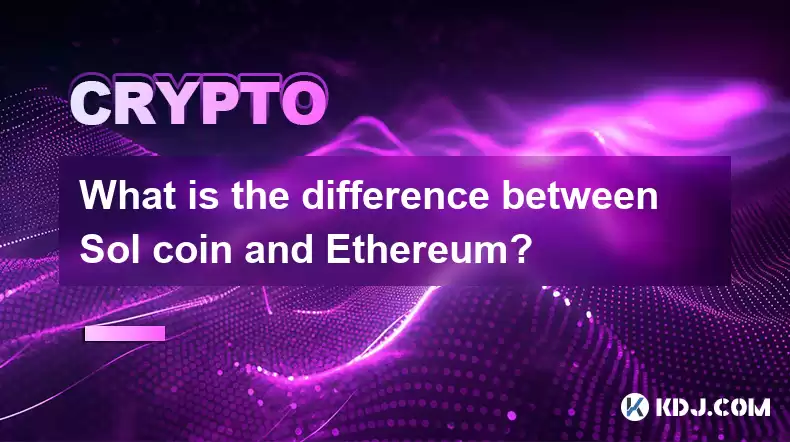
Key Points:
- Scalability: Solana boasts significantly higher transaction speeds and lower fees than Ethereum. This is a core difference driving adoption.
- Consensus Mechanisms: Solana uses a novel Proof-of-History (PoH) mechanism alongside Proof-of-Stake (PoS), while Ethereum employs PoS (currently transitioning from Proof-of-Work). These differing mechanisms impact security and transaction finality.
- Smart Contract Capabilities: Both platforms support smart contracts, enabling decentralized applications (dApps). However, the programming languages and development ecosystems differ.
- Ecosystems: While both have thriving ecosystems, Ethereum's is substantially larger and more mature, offering a wider range of established projects and developers.
- Technology and Architecture: The underlying technologies and architectural designs of Solana and Ethereum are fundamentally different, leading to varied performance characteristics.
What is the difference between Sol coin and Ethereum?
Solana (SOL) and Ethereum (ETH) are both prominent blockchain platforms supporting smart contracts and decentralized applications (dApps), but they differ significantly in their underlying technologies, scalability, and overall ecosystem maturity. Understanding these differences is crucial for choosing the right platform for your needs.
Scalability and Transaction Speed:
Solana's claim to fame is its high throughput. It boasts significantly faster transaction speeds and lower transaction fees compared to Ethereum. Ethereum, while improving its scalability through layer-2 solutions like Optimism and Arbitrum, still faces challenges handling the volume of transactions experienced by some applications during peak times. This speed difference significantly impacts user experience and application functionality.
Consensus Mechanisms:
This is a critical point of divergence. Ethereum utilizes a Proof-of-Stake (PoS) consensus mechanism, where validators stake their ETH to secure the network and validate transactions. Solana, on the other hand, employs a hybrid approach combining Proof-of-History (PoH) with Proof-of-Stake. PoH aims to improve transaction ordering efficiency, contributing to Solana's high throughput. The differences in consensus mechanisms can impact network security and transaction finality.
Smart Contract Capabilities:
Both platforms support smart contracts, allowing developers to build decentralized applications. However, the development environments and programming languages differ. Ethereum predominantly uses Solidity, while Solana utilizes Rust and C++. This impacts the developer experience and the types of applications best suited to each platform. The availability of developer tools and community support also varies significantly.
Ecosystems and Decentralized Applications (dApps):
Ethereum boasts a considerably larger and more mature ecosystem. It has a longer history, attracting a wider range of developers and projects. Consequently, Ethereum supports a vast array of dApps spanning DeFi, NFTs, and more. While Solana's ecosystem is growing rapidly, it's still smaller and less established than Ethereum's. The breadth and depth of available applications are key factors to consider.
Technology and Architecture:
Solana's architecture differs significantly from Ethereum's. Solana leverages a novel approach to consensus, incorporating PoH, which distinguishes it from Ethereum's PoS. These fundamental architectural differences influence how each network handles transaction processing and data management. Understanding these technical distinctions requires a deeper dive into the underlying mechanisms of each blockchain.
Security Considerations:
Both networks have experienced periods of network instability and outages. While both use robust consensus mechanisms, the differences in their architecture and implementations introduce varying security considerations. Analyzing the security audits and historical performance of each network is vital before deploying critical applications.
Tokenomics and Governance:
SOL and ETH have different tokenomics, affecting their supply, distribution, and governance mechanisms. Understanding how each token's value proposition impacts its overall ecosystem is crucial. Both platforms have governance mechanisms allowing for community participation in decision-making processes, but their specifics differ.
Development and Community:
Ethereum has a significantly larger and more established developer community. This translates to more readily available resources, support, and a wider pool of talent. Solana's community is growing rapidly, but it still lags behind Ethereum's in terms of size and experience.
Future Outlook:
Both platforms are actively developing and evolving. Ethereum is undergoing significant upgrades to improve scalability and efficiency. Solana is also continuously working on enhancements to its network and ecosystem. Keeping abreast of these developments is important to understand the long-term prospects of each platform.
Frequently Asked Questions:
Q: Which platform is better for developers?
A: Ethereum's larger and more mature ecosystem provides more resources and a larger developer community. However, Solana's focus on speed and performance might attract developers prioritizing those aspects.
Q: Which platform offers lower transaction fees?
A: Solana generally offers significantly lower transaction fees compared to Ethereum, especially during periods of high network congestion.
Q: Which platform is more secure?
A: Both platforms utilize robust consensus mechanisms. However, a definitive statement on superior security requires a deeper analysis of their respective vulnerabilities and attack vectors.
Q: Which platform is better for decentralized applications (dApps)?
A: Ethereum's larger ecosystem and wider range of established dApps make it a more established choice. However, Solana's high speed and low fees are attractive to developers seeking performance improvements.
Q: Which coin has greater potential for growth?
A: Predicting future price movements is inherently speculative. Both SOL and ETH have demonstrated significant price volatility and hold considerable market capitalization. Investment decisions should be based on thorough research and risk tolerance.
Disclaimer:info@kdj.com
The information provided is not trading advice. kdj.com does not assume any responsibility for any investments made based on the information provided in this article. Cryptocurrencies are highly volatile and it is highly recommended that you invest with caution after thorough research!
If you believe that the content used on this website infringes your copyright, please contact us immediately (info@kdj.com) and we will delete it promptly.
- Moat Stocks & Mega-Cap Momentum: July's Standout Performance
- 2025-08-09 12:30:12
- Injective (INJ) Eyes $15.39 Breakout Amidst Explosive Network Growth
- 2025-08-09 12:30:12
- Ripple vs. SEC: XRP Price Soars as Legal Battles End, But Can It Outpace Rising Competitors?
- 2025-08-09 13:10:12
- DWP Management, XRP, and Digital Asset Funds: A New Era for Institutional Investment?
- 2025-08-09 13:30:12
- Pi Network's KYB Verification: A Leap Towards Sustainable Token Launch
- 2025-08-09 13:30:12
- Bitcoin, Dollar Alternative, and Institutional Adoption: A New Era?
- 2025-08-09 13:35:12
Related knowledge

Where can I buy UMA (UMA)?
Aug 07,2025 at 06:42pm
Understanding UMA and Its Role in Decentralized FinanceUMA (Universal Market Access) is an Ethereum-based decentralized finance (DeFi) protocol design...

How to buy Storj (STORJ) tokens?
Aug 09,2025 at 07:28am
Understanding Storj (STORJ) and Its Role in Decentralized StorageStorj is a decentralized cloud storage platform that leverages blockchain technology ...
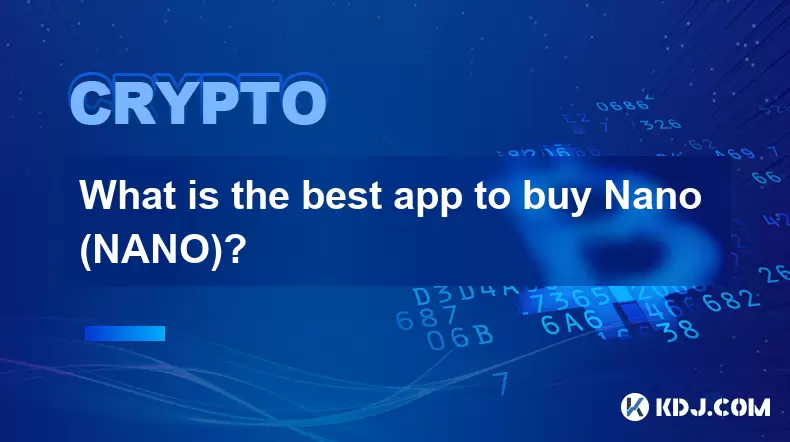
What is the best app to buy Nano (NANO)?
Aug 09,2025 at 03:35am
Understanding Nano (NANO) and Its Unique FeaturesNano is a feeless, instant cryptocurrency designed for fast peer-to-peer transactions. Unlike many ot...
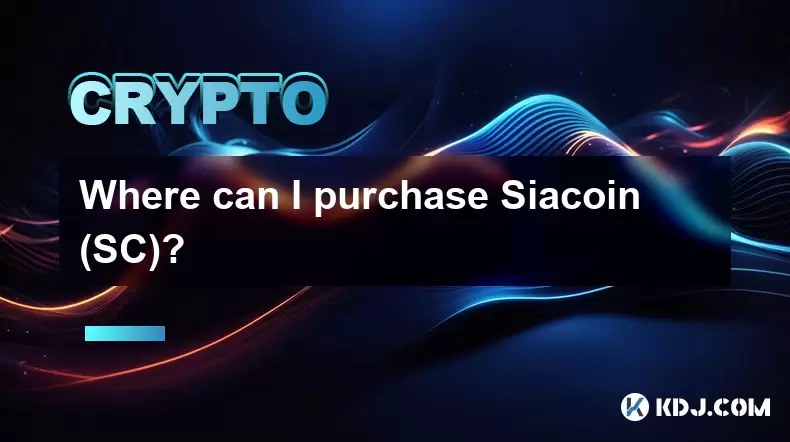
Where can I purchase Siacoin (SC)?
Aug 08,2025 at 11:14am
Understanding Siacoin (SC) and Its Role in the Sia NetworkSiacoin (SC) is the native cryptocurrency of the Sia decentralized cloud storage platform, a...
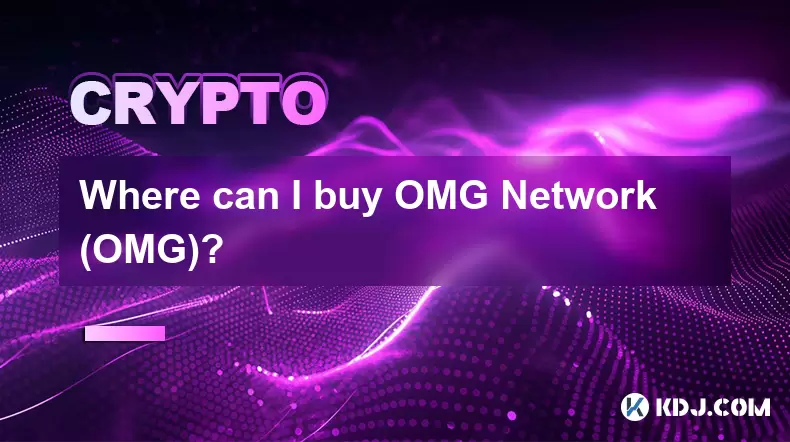
Where can I buy OMG Network (OMG)?
Aug 08,2025 at 12:57pm
Understanding OMG Network (OMG) and Its PurposeThe OMG Network, originally known as OmiseGO, is a layer-2 scaling solution built on the Ethereum block...
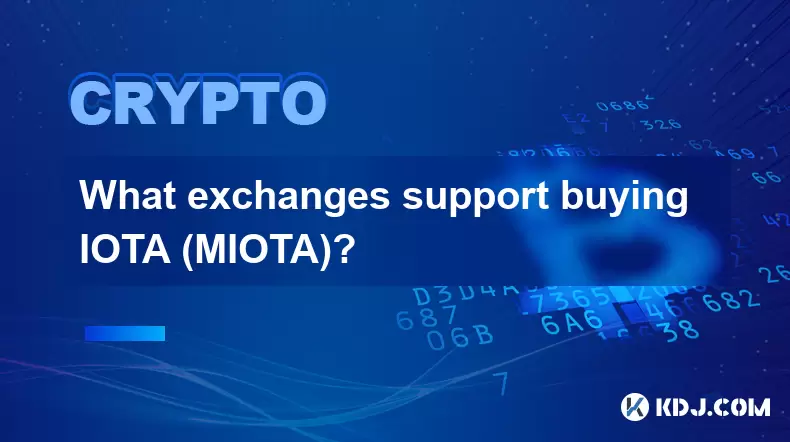
What exchanges support buying IOTA (MIOTA)?
Aug 07,2025 at 09:58pm
Understanding the Role of Private Keys in Cryptocurrency SecurityIn the world of cryptocurrency, private keys are the cornerstone of ownership and con...

Where can I buy UMA (UMA)?
Aug 07,2025 at 06:42pm
Understanding UMA and Its Role in Decentralized FinanceUMA (Universal Market Access) is an Ethereum-based decentralized finance (DeFi) protocol design...

How to buy Storj (STORJ) tokens?
Aug 09,2025 at 07:28am
Understanding Storj (STORJ) and Its Role in Decentralized StorageStorj is a decentralized cloud storage platform that leverages blockchain technology ...

What is the best app to buy Nano (NANO)?
Aug 09,2025 at 03:35am
Understanding Nano (NANO) and Its Unique FeaturesNano is a feeless, instant cryptocurrency designed for fast peer-to-peer transactions. Unlike many ot...

Where can I purchase Siacoin (SC)?
Aug 08,2025 at 11:14am
Understanding Siacoin (SC) and Its Role in the Sia NetworkSiacoin (SC) is the native cryptocurrency of the Sia decentralized cloud storage platform, a...

Where can I buy OMG Network (OMG)?
Aug 08,2025 at 12:57pm
Understanding OMG Network (OMG) and Its PurposeThe OMG Network, originally known as OmiseGO, is a layer-2 scaling solution built on the Ethereum block...

What exchanges support buying IOTA (MIOTA)?
Aug 07,2025 at 09:58pm
Understanding the Role of Private Keys in Cryptocurrency SecurityIn the world of cryptocurrency, private keys are the cornerstone of ownership and con...
See all articles

























































































